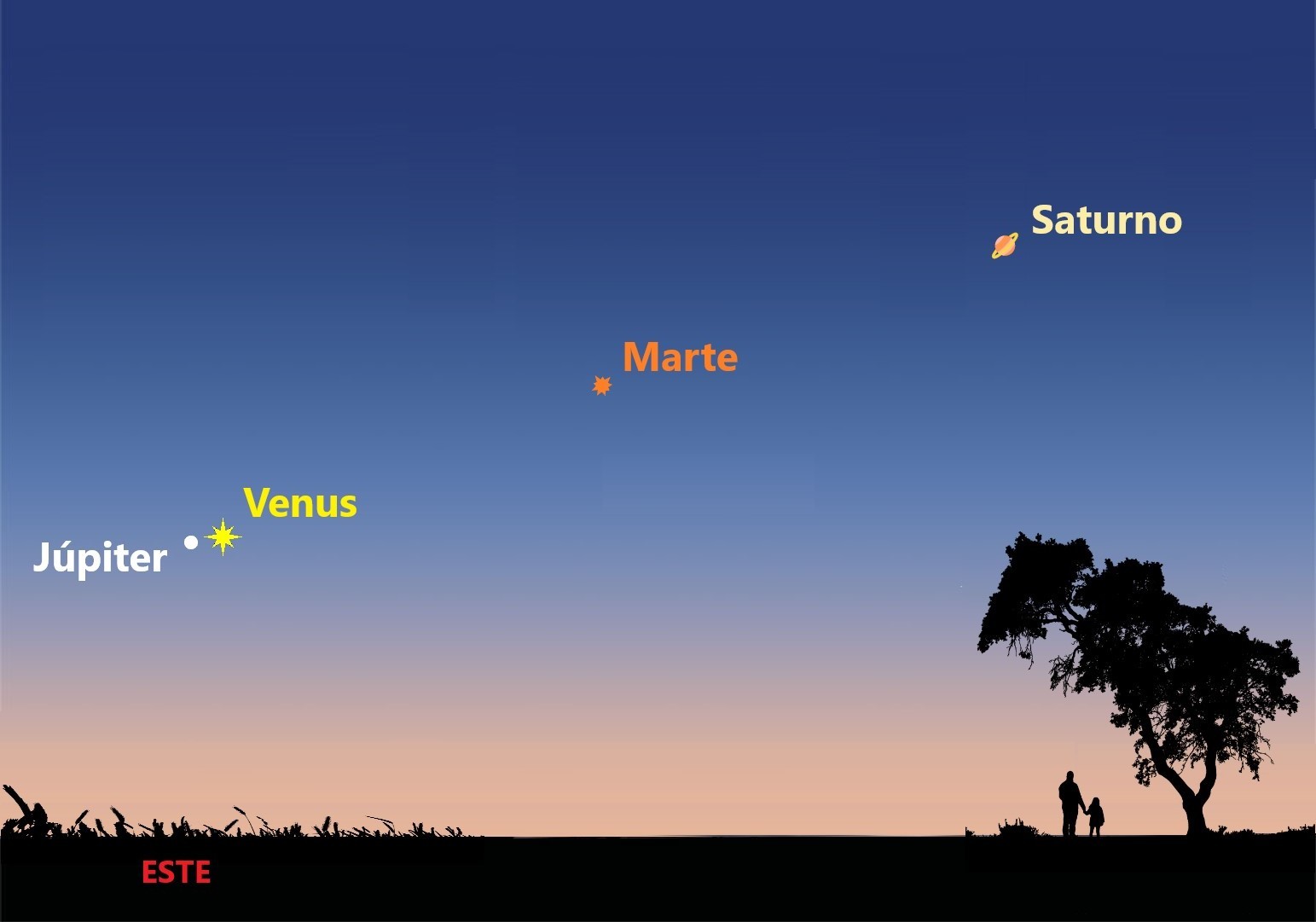Astronomy The core of the Milky Way seen like never before
Chronicles of the Cosmos Where do the geysers on the moon Enceladus come from?
Spring
begins this Sunday, March 20 at
4:33
p.m. (peninsular time)
.
A
total lunar eclipse
,
shooting stars
, planetary conjunctions at dawn... the season arrives full of celestial phenomena.
Spring equinox
Spring in the Northern Hemisphere (and autumn in the South) will begin on March 20 at
4:33
p.m. peninsular time (3:33 p.m. in the Canary Islands).
The
spring equinox
is a turning point in the year, it is the time when
the days lengthen the fastest
: about three minutes a day.
Roughly speaking,
each day the Sun rises a minute and a half earlier
and sets a minute and a half later than the day before.
Start of Spring
The beginning of spring changes from year to year.
The
date can be March 19, 20 or 21
.
In the 21st century, 2003 had the latest start of spring while 2096 will have the earliest start.
Full moon and changing Easter
The first
full moon
of spring determines the date of
Holy Week
.
The rule is that Easter Sunday is the first Sunday following the first full moon of spring.
In the case of this year, since the first full Moon occurs on Saturday April 16,
Easter Sunday will be April 17
.
Time change
Following the guidelines of the European Commission, the
change to summer time
takes place on the
last Sunday of March
.
Therefore, at 02-00 in the morning of March 27 (peninsular time) the clocks will have to be advanced until 03.00.
This Sunday will only have 23 hours.
The time change, together with the lengthening of the days,
will mean that we have much more time with sunlight
during the afternoons.
A total lunar eclipse not to be missed
This spring there will be a total lunar eclipse.
On May 16 our satellite will turn red and this blood moon can be seen from all over Spain just before dawn: the totality phase will begin at 05:26 and end at 06:50 (peninsular time).
It
's the first total eclipse we've seen in Spain since July 2019
, and there won't be another one until October 2023, so don't miss it.
When the time draws near, in these Appointments with Heaven we will offer you all the details for your observation.
There will also be a
solar eclipse
this spring.
It will be partial, it will take place on April 30 and it will only be observable from southern South America and the Pacific.
Planetary conjunction, twilight of May 28.RB
Planetary shows at dawn
The planetary action of spring will be concentrated in the sunrises.
At dawn and to the east we will be able to observe Venus, Mars and Saturn throughout the season, and Jupiter will join them from mid-April.
The four planets will form beautiful conjunctions with each other and also with the Moon
.
For example, on April 30, Venus and Jupiter will appear very close together in the sky, while Mars and Saturn will shine higher.
After sunset, we can only see Mercury from mid-April to early May.
Shooting Stars
The most interesting
meteor showers
this spring are the
Lyrids
, which will peak around April 22 (with the Moon at last quarter) and the
Eta Aquarids
, which will peak on May 6 (with the Moon at first quarter).
Illumination of the Earth at the equinox.Timeanddate/RB
At the Aries point
At the equinox the two poles of the Earth are the same distance from the Sun, and only exactly one half of the Earth is illuminated.
On that day, the Sun seen from Earth is at Point Aries, crossing the celestial equator to the north.
On the day of the equinox,
at all points on Earth, the night has a duration equal to that of the day: 12 hours
.
This is where the word equinox is derived, since in Latin "aequi noctium" means "equal night".
Special day at the poles
At the terrestrial poles, the day of the equinox is also very special.
At the
North Pole
it goes from a period of 6 months of night to a period of 6 months of day.
There, on the 20th, the Sun will be seen for 12 hours as a half-disk on the horizon that remains visible until the autumnal equinox.
And after three months, the summer
This spring, which will last 92 days and 18 hours, will end on June 21 with the
beginning of summer
.
Rafael Bachiller
is director of the National Astronomical Observatory (National Geographic Institute) and academic of the Royal Academy of Doctors of Spain.
Conforms to The Trust Project criteria
Know more
AstronomyZodiac light: what it is and how to observe it
EnvironmentThe 'library' of underwater sounds: scientists record the natural choir of ocean inhabitants
War in Ukraine Nuclear power plants as a strategic weapon: is there a risk of another Chernobyl in Ukraine?
See links of interest
War Ukraine Russia
transportation strike
Last News
Foster children Ukraine
Time change
Oscars movies where to watch
best colleges
Topics
Work calendar 2022
Aston Villa-Arsenal
Alaves - Granada CF
Real Sociedad B - Mirandes
Napoli - Udinese
SpVgg Greuther Fürth - Sport-Club Freiburg

